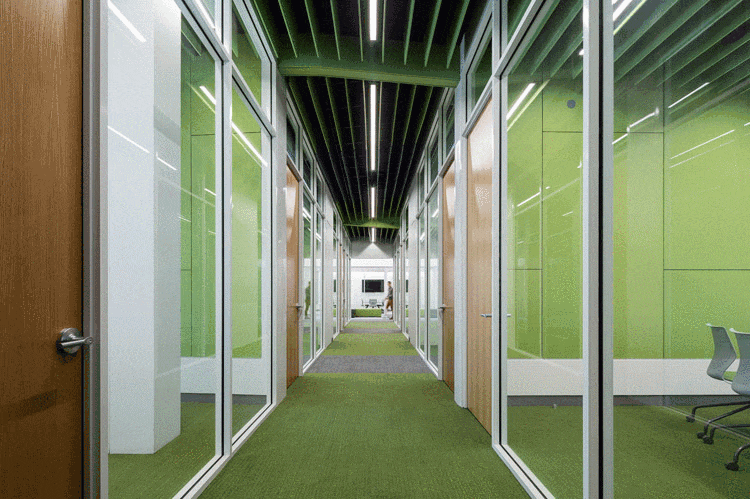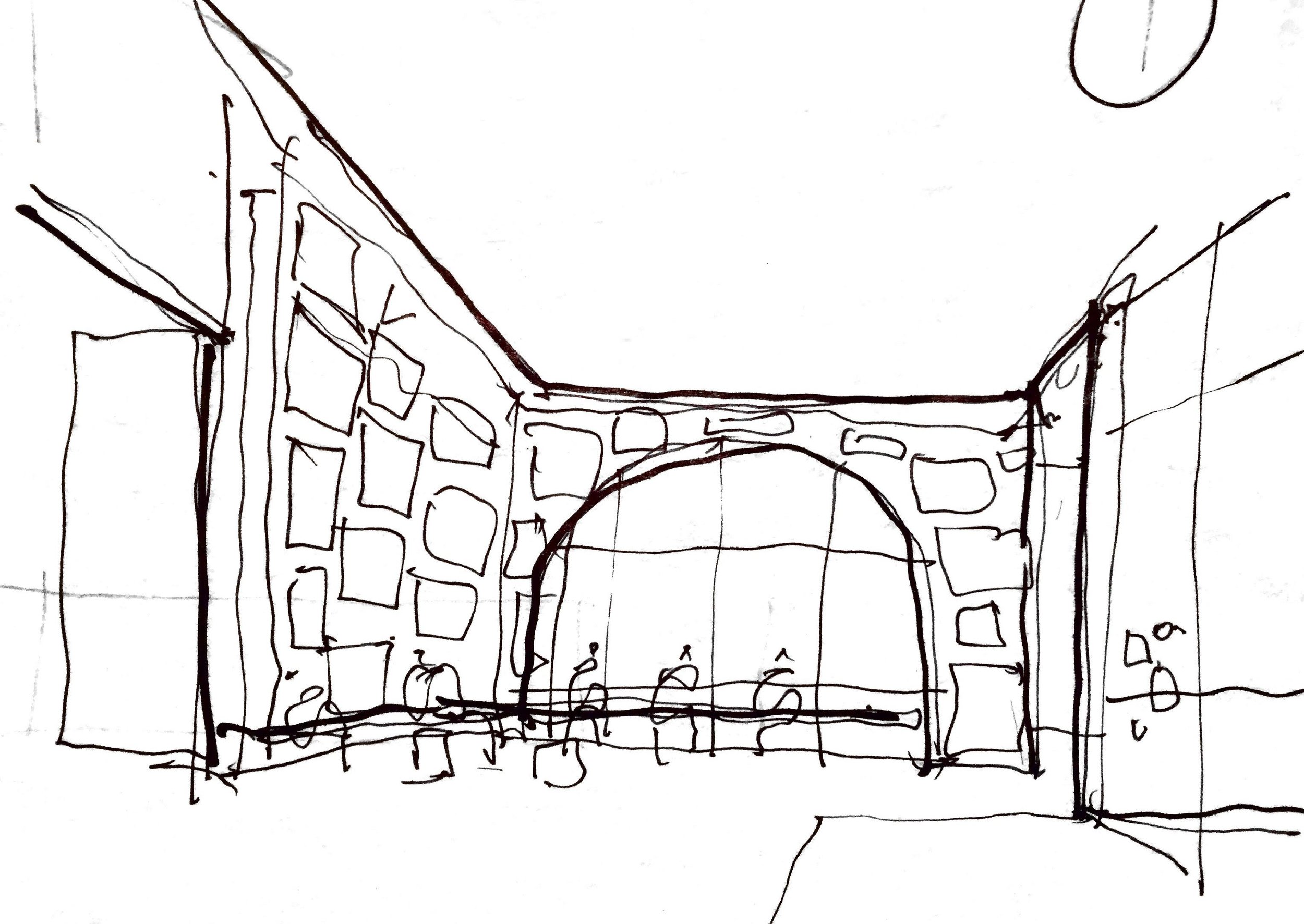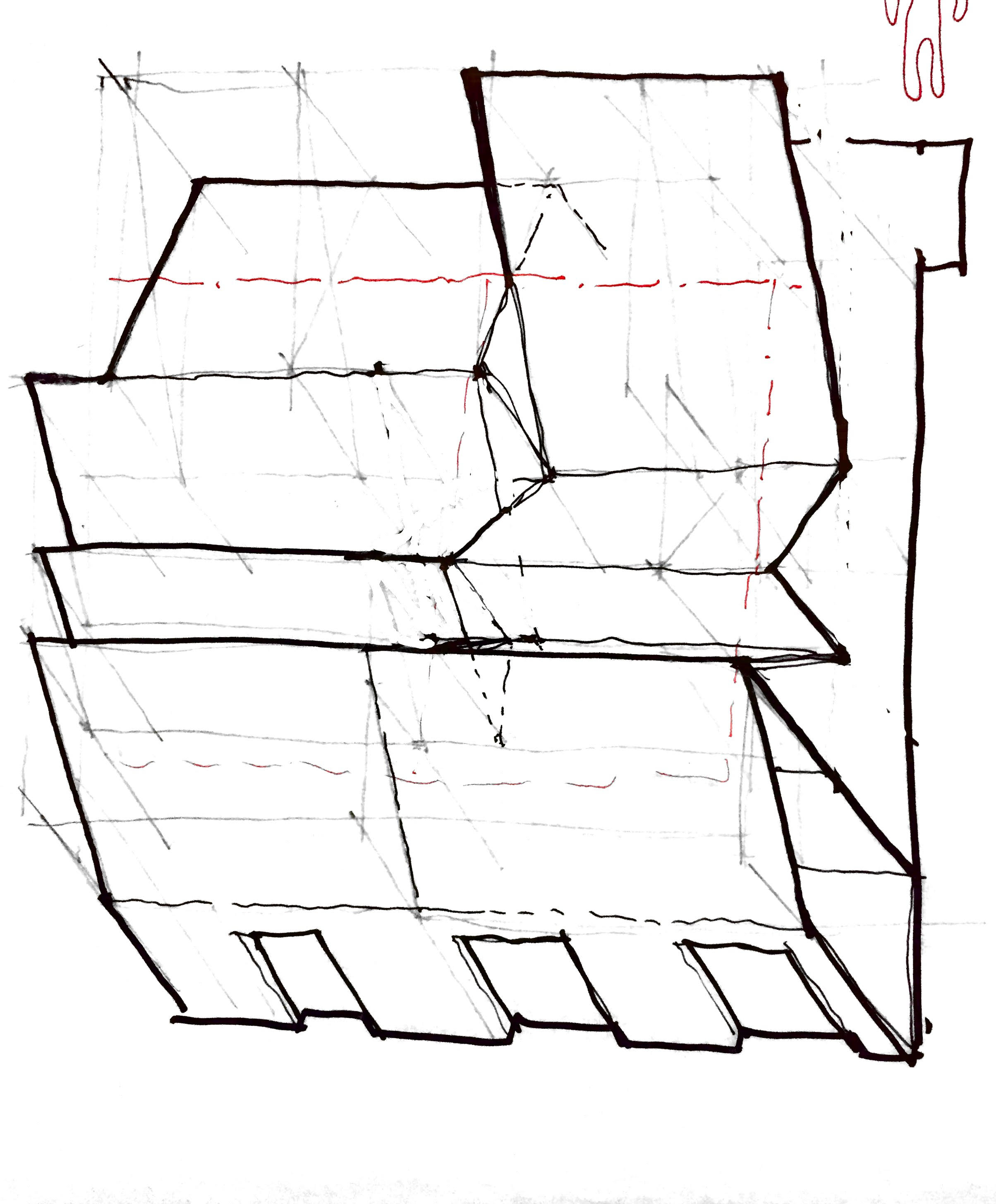


















Your Custom Text Here
Working within existing spaces often means considering missed opportunities and uncovering remnants of the previous life of a building. These unobserved artifacts lie dormant until they become the focal points of a modern design intervention that can bridge the gap between the new and the existing situation.
The new medical school classrooms at the Curtis Building of the Thomas Jefferson University downtown campus revitalize a large area of a floor around a central vertical circulation core. The design, dubbed the “house of cards” for the variably positioned thin acoustic wall planes that separate its sixteen-person seminar rooms, was so efficient that it enabled the project to provide ten classrooms instead of the originally mandated eight. Glass walls intersect the tall acoustic walls to enhance the visual and spatial generosity of the classrooms, drawing light from the southern facade on Walnut Street. A large arched window, previously relegated to a narrow corridor, is given new life as the centerpiece of a student lounge and circulation path.
During preliminary design and survey, Studio Modh found that there was seven feet of unutilized ceiling space above the existing dropped ceiling tiles. Using a recycled polyester acoustic baffle in an open configuration, this ceiling volume has been harvested to afford more light and air movement and create a dynamic, colorful ceiling plane.
The University also possesses a wonderful collection of oil paintings that were hanging in lost hallways and the corners of rooms. Studio Modh is working with the client to curate an installation of paintings and other elements of the University’s rich history of medical innovation. These paintings and objects will be gathered in the new student lounge and mounted, salon style, around the perimeter of the space to highlight the history of the institution and its intersection with art.
Philadelphia, PA
Completed 2018
5,000 SF
Photography by Devon Banks Photography
Working within existing spaces often means considering missed opportunities and uncovering remnants of the previous life of a building. These unobserved artifacts lie dormant until they become the focal points of a modern design intervention that can bridge the gap between the new and the existing situation.
The new medical school classrooms at the Curtis Building of the Thomas Jefferson University downtown campus revitalize a large area of a floor around a central vertical circulation core. The design, dubbed the “house of cards” for the variably positioned thin acoustic wall planes that separate its sixteen-person seminar rooms, was so efficient that it enabled the project to provide ten classrooms instead of the originally mandated eight. Glass walls intersect the tall acoustic walls to enhance the visual and spatial generosity of the classrooms, drawing light from the southern facade on Walnut Street. A large arched window, previously relegated to a narrow corridor, is given new life as the centerpiece of a student lounge and circulation path.
During preliminary design and survey, Studio Modh found that there was seven feet of unutilized ceiling space above the existing dropped ceiling tiles. Using a recycled polyester acoustic baffle in an open configuration, this ceiling volume has been harvested to afford more light and air movement and create a dynamic, colorful ceiling plane.
The University also possesses a wonderful collection of oil paintings that were hanging in lost hallways and the corners of rooms. Studio Modh is working with the client to curate an installation of paintings and other elements of the University’s rich history of medical innovation. These paintings and objects will be gathered in the new student lounge and mounted, salon style, around the perimeter of the space to highlight the history of the institution and its intersection with art.
Philadelphia, PA
Completed 2018
5,000 SF
Photography by Devon Banks Photography
Copyright Studio Modh Architecture P.L.L.C. | info@studiomodh.com | 347.460.2217